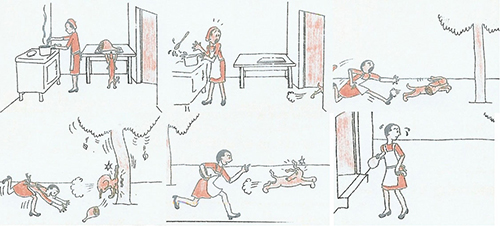Resource 5: Making meaning
![]() Teacher resource for planning or adapting to use with pupils
Teacher resource for planning or adapting to use with pupils
Paragraphs for older classes: The Fulani
The Fulani were traditionally a nomadic, pastoral community, herding cattle, goats and sheep. They populated the grasslands between the towns throughout West Africa. With increasing trade, a good number of Fulani also began to settle in towns, forming a distinct minority.
The Fulani were mostly Muslims, as were the rulers of most of the states in the region. During the 17th and 18th centuries, the Fulani launched scattered uprisings against rulers who were oppressing them. These uprisings resulted in a number of small, and usually briefly lived, emirates in the west of the Sahel.
The most powerful states in the region were the city-states of Hausaland. They had large Fulani populations, who were generally considered second-class citizens. Over the centuries, however, the Hausa and Fulani had become quite integrated. One Hausa state was that of Gobir Poor and on the edge of Hausaland, it was ruled by a group of the decaying Gao empire. This rule was noted for its harshness towards both the Fulani and the Hausa peasants.
One of the most famous religious scholars of the region was Usman dan Fodio, a Fulani, who lived in Gobir. With the approval of Bawa, the ruler of Gobir, he was allowed to found a religious community at Degel. In exchange, dan Fodio blessed the monarchy and educated Bawa's nephew and heir Yunfa. When Yunfa became ruler, however, he decided to take away the autonomy of dan Fodio's community and have dan Fodio assassinated.
Degel was defended, but unable to stand up to the army of Yunfa – dan Fodio and his followers retreated from Gobir. From exile, dan Fodio called for a jihad against oppressors throughout the region, which became the Fulani War. Joined by large numbers of Fulani and also many Hausa, this sparked a general uprising in Hausaland and most of the region’s governments quickly fell. Dan Fodio was proclaimed as ruler of the new empire.
Written text taken from: htt://en.wikipedia.org/wiki/Sokoto_Caliphate
Picture story for younger classes: The dog and the meat
Pictorial story – Standard 2 Language Book, Maskew Miller Longman
Resource 4:Describe and arrange




